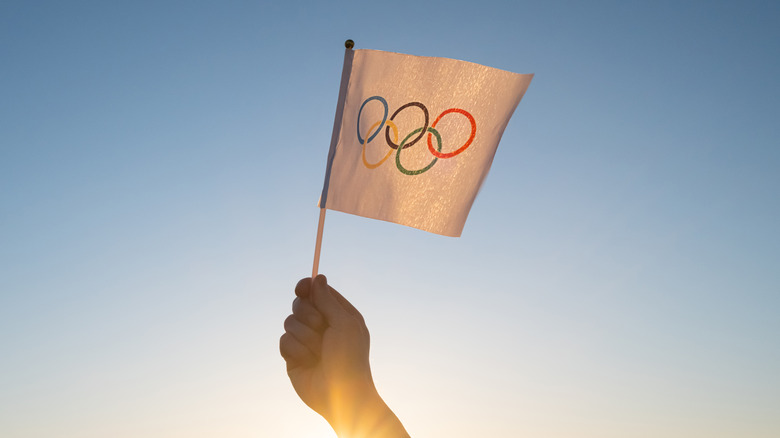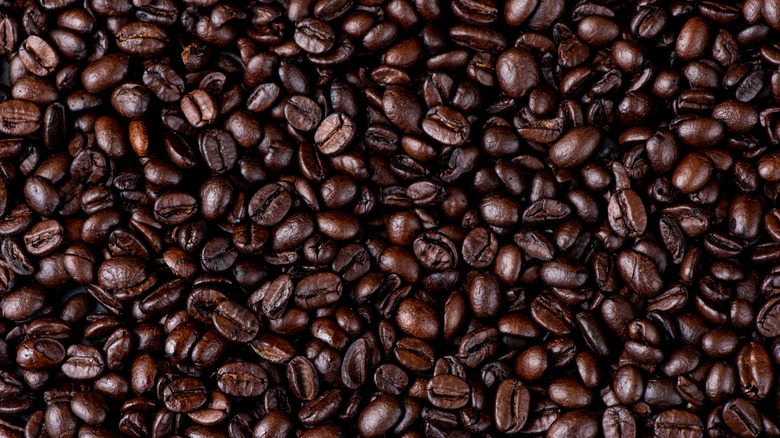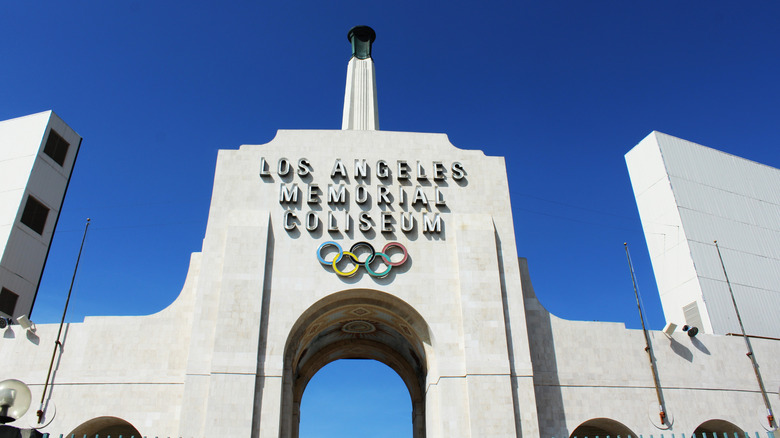The Important Role Coffee Played In The 1932 Olympics
The 1932 Summer Olympics in Los Angeles was notable for a number of innovations. According to Britannica, it was the first Olympics to use a photo-finish camera at events, and it marked the first time that athletes stayed in an Olympic Village, this one situated in the neighborhood of Baldwin Hills. The Los Angeles Coliseum underwent a dramatic renovation for the event, expanding its seating capacity and installing a new track made of crushed peat that led to 10 world records in running being set at that year's games.
The Olympics adds a few more firsts for 1932, including the first time medalists stood on a podium, and the first time the games adopted the roughly two-week schedule we know today. However, for all their innovations, the 1932 Olympics were overshadowed by a major issue — athletes couldn't make it to the games. The IOC points out that California was actually a rather remote place at the time due to a lack of sufficient transportation routes, posing a major challenge to its international partners.
Moreover, this was the midst of the Great Depression. Sports Illustrated reveals that the cost of sending athletes to LA proved so prohibitive that Olympic participation was down 50% from the past event — from 3,015 athletes in 1928 to just 1,500 in 1932. The latter number was almost lower, as it looked like one of the world's largest countries wouldn't make it to the Olympics. That is until the coffee industry stepped in.
A different kind of caffeine boost
Brazil grows the most coffee of any country, and as such, the coffee trade is an integral part of the nation's economy. This is nothing new, as Coffee Crossroads points out that Brazil was the coffee king even in 1932, producing around 80% of the world's coffee at the time. The Great Depression caused demand for coffee to plummet, leaving Brazil with a surplus of beans on its hands that nobody seemed to want. The National Coffee Council saw an opportunity in the upcoming Olympics and struck up a partnership with Brazil's sports federation to finance the national team with surplus coffee.
According to Sports Illustrated, the National Coffee Council donated some 50,000 pounds of coffee, which the 69-member Olympic team was to take with it on their journey to LA via the Panama Canal. The first hitch in the plan came when the crew failed to sell any coffee in South America and couldn't afford the canal toll. They had to radio the national bank of Brazil for help, and thankfully, a messenger arrived with cash a few days later. However, that was just the beginning of their troubles.
Turmoil abroad and at home
When the Brazilian athletes arrived in Los Angeles on July 22, 1932, they discovered there was a fee of $1 per person upon entry, and the team could only afford to pay for 24 athletes to go ashore (via Coffee Crossroads). The rest had to stay aboard the ship as it traveled North to San Francisco to try to sell its caffeinated cargo. It would return to LA a week later to pick up the athletes, but only after it was delayed because the crew couldn't pay dockage fees.
The Brazilian athletes who did make it to the Olympics, unfortunately, did not fare well in the competition. Sports Illustrated reports they won no medals and managed at best, one sixth-place finish. However, even more trouble was brewing at home in Brazil. During the athletes' trip to LA, a revolution erupted in the South American country. Per Coffee Crossroads, ports in major cities like São Paolo were closed, and the athletes had to split up to find alternative routes by sea, rail, or even by foot. They were able to make it though, thanks in no small part to the fact that, between LA and San Francisco, the Brazilian crew finally managed to sell all of their coffee.


